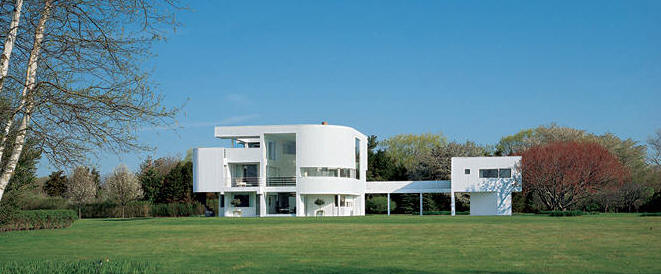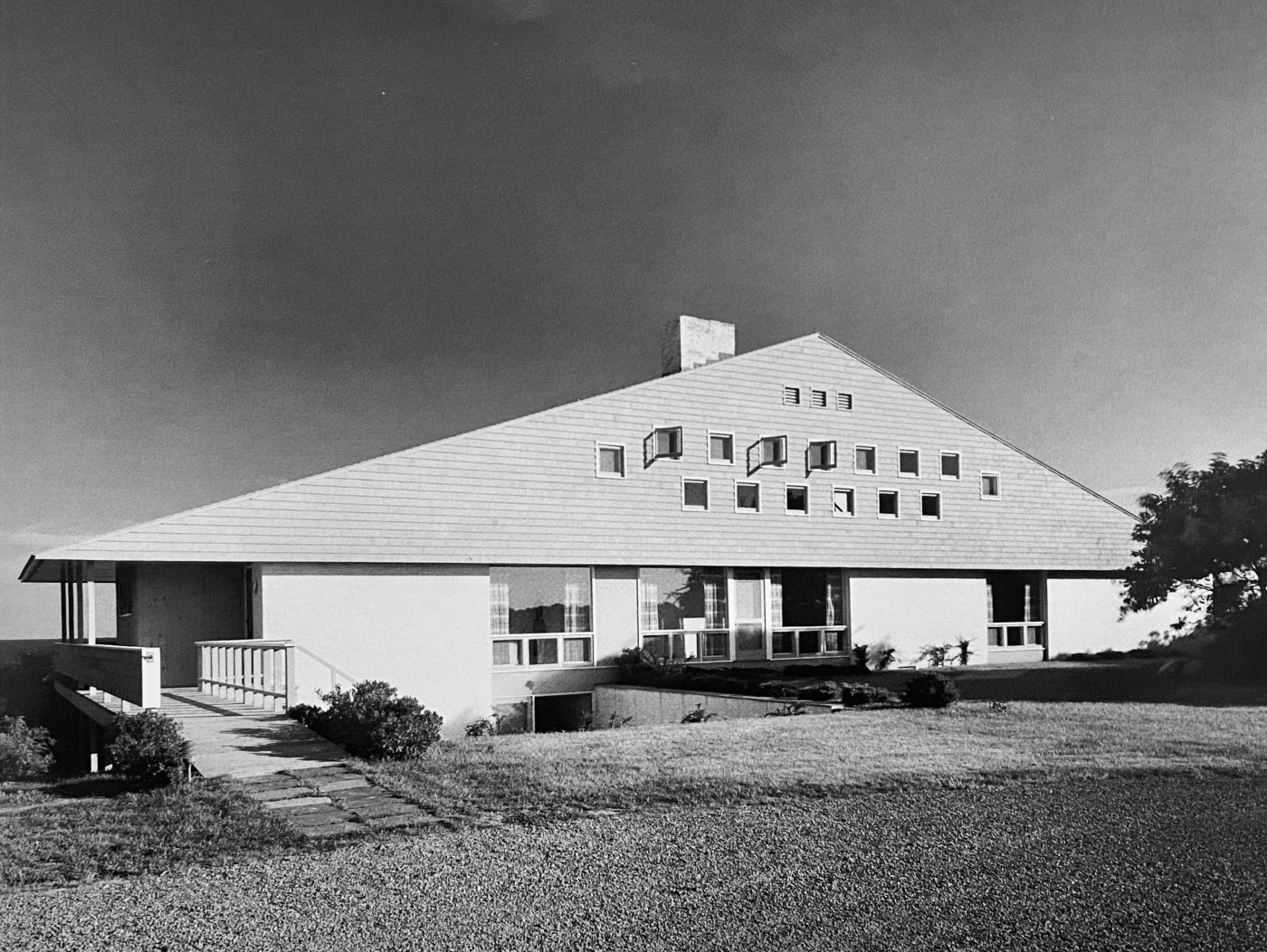
Modernist Influence
Modern architecture in the Hamptons evolved significantly during the mid-20th century, marking a departure from traditional architectural styles. This period saw a surge in innovative designs characterized by clean lines, open spaces, and an emphasis on integrating structures with their natural surroundings. The movement was greatly influenced by the arrival of artists and architects who sought to escape the urban environment and find inspiration in the natural beauty of the Hamptons.
Prominent architects such as Norman Jaffe, Paul Rudolph, and Richard Meier played crucial roles in shaping the region’s modernist landscape. Each architect brought their own sensibilities and design aesthetic. Norman Jaffe, known for his organic and sculptural designs, used natural materials like stone and wood to create buildings that blend seamlessly with the environment. Paul Rudolph’s work is celebrated for its bold designs, pushing the boundaries of architectural form. Richard Meier introduced iconic geometric structures, emphasizing simplicity and light.
A Rich History of Art and Architecture
The modernist movement in the Hamptons also reflected broader social and cultural shifts of the time. The post-World War II era brought about a desire for innovation and progress, which was manifested in the architectural experimentation seen in the Hamptons. This period also coincided with an influx of artists and intellectuals to the area, who were drawn by its natural beauty and tranquility, further fostering a creative and avant-garde environment. The modernist homes of the Hamptons stand as architectural landmarks, symbolizing a unique blend of artistic vision and historical significance.
The tradition of artistic excellence in the Hamptons has profoundly influenced the region’s architectural landscape. From the early 20th century avant-garde movement to contemporary creators, the Hamptons have been a haven for artists. This artistic legacy has significantly shaped the modernist architecture of the area, blending aesthetic principles with architectural innovation. The integration of art and architecture, a hallmark of Modernism, finds its roots in the avant-garde movements of the early 20th century, influenced by figures like Mies van der Rohe and Le Corbusier.
In the Hamptons, this fusion of artistic and architectural vision is deeply embedded in the region’s history. The area became popular with artists, writers and architects as early as the 1920s, a tradition which continues to today. The area has attracted renowned artists such as Willem de Kooning, Jackson Pollock and Robert Motherwell, who found inspiration in its serene landscapes and vibrant cultural scene. The same landscape that influenced these artists also served as a muse for the architects who came to the region. Their presence underscores the close relationship between art and architecture that characterizes the Hamptons’ modernist heritage. (See Alistair Gordon’s book Weekend Utopia).
Preservation Challenges
Despite the significance of modernist architecture in the Hamptons, the region faces immense pressure from development. The land’s high value often leads to the demolition of modernist treasures to make way for new, larger homes. Some of the notable examples of buildings already lost to the wrecking ball include:

- The Cogan House: Gwathmey Siegel, East Hampton. Built 1972, demolished 2005.
- Robert Motherwell House: Pierre Chareau, East Hampton. Demolished 1985.
- Spaeth House: Gordon Chadwick, East Hampton. Built 1956, demolished 2023.
- Farney House: Philip Johnson, Sagoponack. Designed 1946, demolished 2014.
- Lloyds House: Norman Jaffe, East Hampton. Built 1977, demolished c.2016.
- Peter Noel Simon House: Barbara Goldberg Neski, Water Mill. Built c.1968, demolished 1999
One of the significant challenges is the lack of an up-to-date, comprehensive survey of Long Island’s midcentury modernist resources (among others) ,especially on the East End. In many communities, the most recent surveys were conducted our organization (then known as the Society for the Preservation of Long Island Antiquities) back in the 1960s and 1970s. As a result, there is a real need to update surveys of historic resources around Long Island. This is true not just for modern architecture, but also for underrepresented communities whose history has yet to be properly documented. A second challenge in the Hamptons is that many of the properties are hidden from public view due to setbacks from the road and vegetation, making it difficult to ascertain which buildings are still extent.
Caroline Rob Zaleski’s 2012 book, Long Island Modernism 1930-1980 meticulously documents the array of residential and public buildings designed during this period, highlighting the work of key architects and their contributions to the modernist movement. Zaleski illuminates the significant contributions of Long Island’s modernist architects and underscores the region’s pivotal role in the broader narrative of American architectural history. Zaleski’s book serves as an essential resource for understanding the region’s impact on modernist design and as a foundation for creating a comprehensive survey of remaining modern architecture in communities around Long Island. The import survey work of modern architecture on the South Fork has been started with survey projects by advocacy group Hamptons 20th Century Modern and a survey by Kate Reggev for Southampton Village in 2024, but much more remains to be done to fully capture the region’s rich modern and post-modern heritage. Only once surveyed can these buildings be potentially protected from insensitive alterations and demolition by listing them as local historic landmarks.
Increasing awareness and appreciation of these important structures is a crucial part in insuring their survival. Hamptons 20th Century Modern’s lectures and annual house tour grant rare access to these homes and gathers experts like George Smart of US Modernist and Liz Waytkus, Executive Director of Docomomo. This summer, the Montauk Historical Society’s Leisurama Exhibit sheds light on a unique chapter of Montauk’s architectural history, focusing on the innovative vacation homes of the 1960s. These events help foster a greater understanding and appreciation of mid-century modern homes, putting the appropriate spotlight on the Hamptons for their International significance to the modern movement. By raising awareness and highlighting the importance of these modernist structures, these initiatives play a vital role in advocating for their survival.

Another significant element to saving these structures is shifting the narrative away from development when these buildings come on the market. Many of these modern gems are marketed by real estate agents as tear downs due to the (relative) small size of the houses and property values on the East End. In communities like Palm Springs, CA modern houses often are sold for more money in square footage when compared with other housing styles. Homeowners and realtors have been able to see the houses as desirable, in part due to events like Modernism week, which draws more than 120,000 attendees every year. Increasing appreciation for modern and postmodern architecture in the Hamptons is a crucial part of saving these significant resources. Wouldn’t it be wonderful if people were soon competing for the latest Gwathmey or Neski on the market not for the land’s value, but for its beauty and artistic significance?
Learn More:
Book: Long Island Modernism, 1930-1980 by Caroline Rob Zaleski
Preservation Long Island
Book: Weekend Utopia: Modern Living in the Hamptons by Alistair Gordon
US Modernist
USModernist
Hamptons 20th Century Modern
Hamptons 20th Century Modern
Our Hamptons Podcast – Interview with Susan Horowitz
Our Hamptons Podcast
Southampton Modernist Homes Report by Kate Reggev
DOCOMOMO NY/Tri-State
Saving Modernism in the Hamptons – New York Times
NY Times



